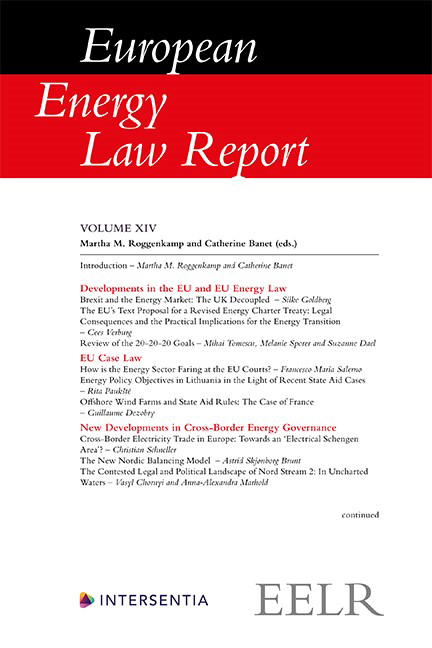Chapter VIII - The New Nordic Balancing Model
Published online by Cambridge University Press: 26 May 2022
Summary
INTRODUCTION
The Nordic Balancing Model is a process preparing the Nordic TSOs and market participants for the European integration of balancing markets, integrated automatized European-wide markets with market clearing at least every ten seconds.
This chapter describes the relationship between the financial and physical power markets and how the physical wholesale market is dependent on a wellfunctioning balancing market (section 2). It reviews the close relationship between balancing and system operation, and how the Nordic Balancing Model is different from the various continental European models, as well as the future balancing model outlined in Commission Regulation (EU) 2017/2195 of 23 November 2017 establishing a guideline on electricity balancing (EBGL). This chapter also describes how the Nordic balancing will move towards the model set out in the European network codes and guidelines (section 3). The chapter ends with some concluding remarks (section 4).
ONGOING CHANGES IN THE ELECTRICITY AND BALANCING MARKETS
POWER MARKETS AND POWER TRADING
The structure of the electricity market is based on the principle that electricity production and trading will be market-based, while grid operations and system operations are strictly regulated. Electricity transmission, system operations, and distribution are natural monopolies and are not subject to competition. The power markets, and power trading, allow players in the market to derive mutual benefits from differences between available natural resources, electricity production systems, grid capacity and consumption patterns. Trade results in lower overall costs than if each country were to provide for its energy supplies alone (cost-effectiveness). The integrated Nordic and European power trading are organized with the objective of ensuring that power always flows from a low-price area to a high-price area. This means that power always flows to where its value is greatest. Trade between Norway’s hydro-based power system and the (historical) thermal power systems in continental Europe illustrates these benefits.
The demand curve in electricity is very inelastic, meaning that a small change in the supply can have a significant impact on the price of electricity.
- Type
- Chapter
- Information
- European Energy Law Report , pp. 149 - 170Publisher: IntersentiaPrint publication year: 2021



